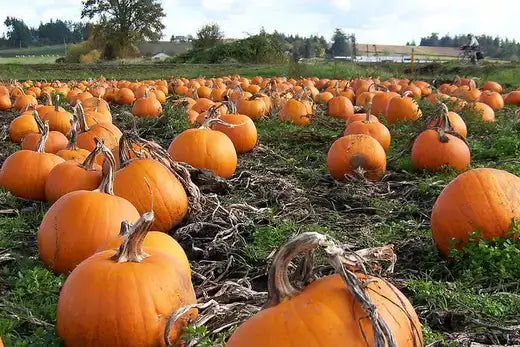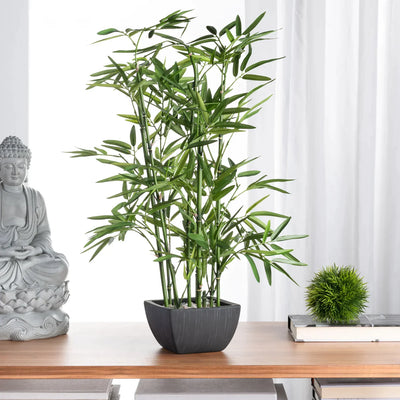Making your own pumpkin patch is one of the most fun and satisfying gardening projects you can do. You can grow pumpkins for more than just pies and fall decorations. They are a great crop for growers of all skill levels. With the right dirt, sunlight and care, you can have colorful vines spread out in your yard and big, healthy pumpkins ready for harvest time.
The key to success is knowing the different pumpkin varieties and how to plant them. TN Nursery helps gardeners by giving them useful information and high quality plants that go well with pumpkins, like the Pawpaw Tree and Bamboo Plant, which are both great for making gardens that are diverse and do well.
Understanding Pumpkin Varieties for Your Garden
Before you begin pumpkins planting, it's important to choose the right type for your climate, yard size and use. There are hundreds of different pumpkin varieties, each with its own color, taste and shape.
Popular Pumpkin Varieties Include:
- Jack-o'-Lantern: These are traditional orange pumpkins that are great for carving.
- Sugar Pie: These are small, sweet pies that are great for cooking and baking.
- Cinderella: Pumpkins that are flat, deep orange and look nice as decorations.
- Mini pumpkins: Are fun to grow and don't take up much space, so they're great for kids' gardens and small yards.
- Giant pumpkins: Are great for contests and making a statement.
When you're planning your garden pumpkin patch, you might want to mix different types to get more harvests and a more interesting show. Smaller pumpkins get ready to eat faster, while bigger pumpkins take longer but create better results.
How to Plant and Grow Pumpkins Successfully
Before you can learn how to grow pumpkins, you need to know how they normally grow. They need a lot of room, sun and dirt that is full of nutrients to grow well.
Step 1: Pick a good spot
Pick a spot that gets at least 6 to 8 hours of full sun every day. Pumpkins do best when it's warm outside because they like the heat. Plant your patch where vines can grow without too much shade for smaller plants if you can.
Step 2: Get the Soil Ready
Pumpkins like soil that is loose, drains well and has compost or old dung added to it. Between 6.0 and 6.8 is the best pH level. Loosen the dirt about 12 inches deep and mix in organic matter to help it hold on to water before you plant.
Step 3: Plant the seeds
- Once the ground is warmer than 65 °F, plant pumpkin seeds right into it.
- Plant two or three seeds in each hill, leaving four to five feet between each hill.
- After the seeds sprout, thin them down to the strongest one.
If your yard doesn't have a lot of room, train vines to grow along the ground next to bigger plants, like the Bamboo Plant, to block the wind naturally.
Step 4: Give it water and mulch
Deeply water the dirt once or twice a week to keep it moist but not soaked. Covering plants with mulch will keep them from growing weeds, keep the soil at the right temperature and keep water in.
You can grow a healthy and abundant pumpkin patch by following these easy pumpkins planting steps.
Key Care Maintenance for Pumpkin Plants
After you plant your seeds, they will grow quickly and produce a lot if you take good care of them. If you want to take good care of your pumpkin, here are some important tips:
1. Giving your plants food
Pumpkins need a lot of food. When the vines start to grow, use a balanced fertilizer like 10-10-10. As the fruits start to form, switch to a fertilizer that is high in phosphorous to help the flowers and fruits grow.
2. Pruning and Training
To get bigger pumpkins, cut back any extra vines and only let two or three seeds grow on each plant. To save room and keep the vines from getting tangled, train them in a circle.
3. Getting rid of pests and diseases
Keep an eye out for powdery mildew, cucumber beetles and squash bugs. Rub insecticidal soap on the bugs or get rid of them by hand. Good breathing and enough space between things help prevent fungal problems.
4. Keeping growth going
When pumpkins start to form, put straw or boards under them to keep them from rotting and make the color better. Keep the patch free of weeds and water it regularly when it's dry.
Shade tolerant plants, like the Pawpaw Tree, go well with pumpkins. This can help your garden have more variety and life.
Harvesting and Storing Your Pumpkins
If you want to enjoy a garden pumpkin patch that is full, you need to know when to pick. When the skin is hard enough that your fingernail can't easily scratch it and the pumpkin has hit full color, it's ready.
Harvest Tips:
- Use pruning shears to cut the stem, leaving about 2 to 3 inches of it connected
- Be careful not to bruise the pumpkins when you handle them
- Let them dry in a warm, dry place for a week before putting them away
If you keep pumpkins in a cool, dry place for a few months, they will last longer and you can enjoy them after the harvest season is over.
FAQs
What is a pumpkin patch?
A pumpkin patch is a special spot in your yard or field where you grow pumpkins. The pumpkins you grow will usually be different sizes and shapes.
What kind of soil is best for pumpkin plants?
Pumpkins do best in soil that is rich, drains well and has a pH of 6.0 to 6.8. Adding compost makes the soil better and increases its vitality.
How to care for pumpkins during the growing season?
Water the vines often, give them a modest amount of fertilizer and keep pests and diseases away from them. Cut back on extra growth to help fruit trees grow well.
How to grow pumpkin plants?
Plant seeds where they will get full sun, water them often and give the vines plenty of room to grow. Pick the rinds when they are hard and fully colored.
Where can I buy healthy pumpkin plants online?
TN Nursery has natural and ornamental plants, as well as good pumpkin plants and species that grow well with pumpkins.



